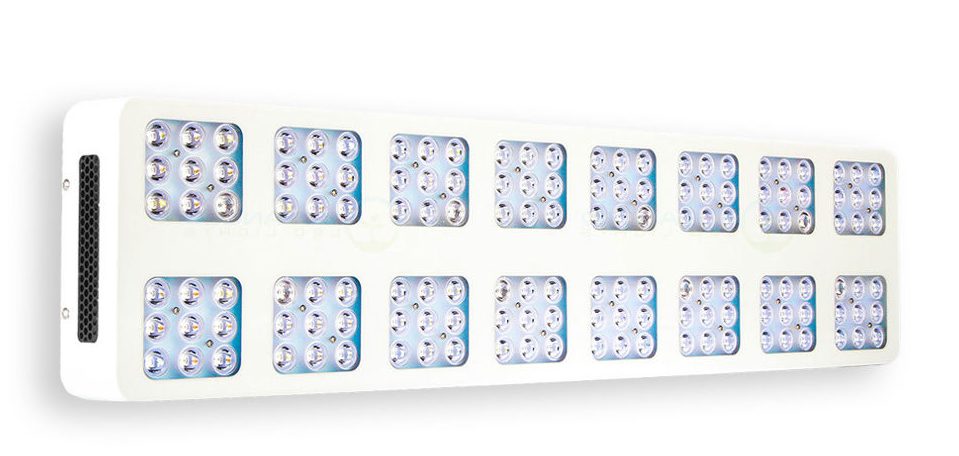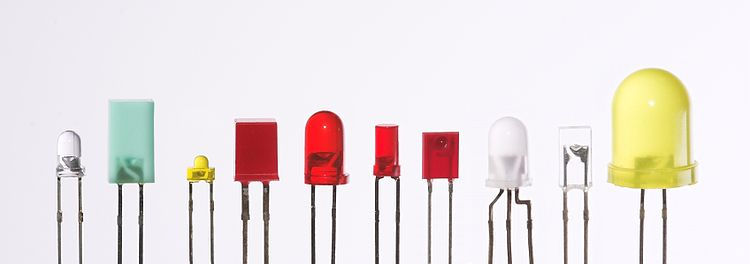Grow lights are a critical tool for anyone who wants to efficiently grow plants indoors and LEDs are the way to go. Compared to regular lights, they are more luminous and durable, without any overheating issues like traditional HID and HPS lights. To be more precise, LEDs can bring close to 25% yield increase, 50% less energy consumption and 50% less heat emission.
Here is more information about what makes them so great.
In recent years the LED grow lights market has expanded considerably, mainly due to the technology being applied in developing fields such as vertical farming and indoor growing. Plants need more light in the blue and red color spectrums, which can be achieved with full spectrum LED grow lights, helping growers save both time and money.
Many first time growers are entering the market and the industry is expanding very quickly which unfortunately, creates an issue because the market is becoming saturated. There is now a myriad of products with different features, builds and price ranges, which makes choosing a grow light very challenging. One needs to spend heaps of time to do online research on products that might turn out to be quite different than described. There are also many low-cost manufacturers that cut expenses by using cheap materials. What seems to be a good deal at first might turn out costing you more in the end.
As in most fields, there are only a few big brands that provide real quality products. Price cannot be overlooked, but there are also other factors at play. In order to save you time and effort, which you can later use for the actual growing part, we are going to tell you what exactly to look for when making the choice and demonstrate that price is not always detrimental for quality.
Finding the Right Product
Let’s continue with the basic criteria for choosing grow lights. You need to consider the following-
Size of the Area
The first important thing is the size of the area you need to cover. Consider how many lights will be needed so that everything is fully illuminated.
Plant Growth Phases
Think about whether you need lights for supporting a full growth cycle. If that’s the case you’ll need a full spectrum LED light.
Light Lens Angle
Check the angle at which the LED bulbs disperses the light. This is an important factor that determines the light coverage area. A bigger angle means more area covered, but less light dispersion strength.
Budget
Consider what you need the lights for. If you’re running a small scale growing operation, most likely you won’t need a dozen of the most expensive products on the market. But still, if you want to achieve good results, you’ll need to make a proper investment.
Factors Affecting the Price of LED Lights
The priciest product is not always the best one. There are many factors that make up the final price and only a few of them are directly linked to the actual build quality and performance.
Research and Development
R&D is what happens behind the scenes. Regular buyers don’t see all the effort and testing that happens before the release of a product and naturally, there are costs associated with that. Big brands pour a lot of funds into developing and improving their products, which has an effect on the end price.
Materials
Needless to say, quality materials are more expensive, but they are essential for the making of a quality product. Lights in the low price ranges usually suffer in this aspect and break a lot sooner than expected.
Cost of the LEDs
Light emitting diodes are the essence of LED lights. The higher their quality, the higher the price. Bigger LED light companies partner together with trustworthy manufacturers.
Assembly Cost
Putting all the parts together means employing workers and paying wages. Naturally, these are factors affected by the wage standards in the country of origin and other local factors.
Transportation Costs
Depending on the manufacturer’s distribution network, scale of operation and location, transportation can be another costly factor. It is important to note here that this is a factor that does not affect the quality of the lights, only the price.
Price Premium
The price premium is an added cost that has no relation to either the quality or manufacturing costs of the product but is rather a marketing method for making a product appear more high-end. For example, a low-level lights manufacturer can create a fancy packaging for its product and sell it in the same price range as brands with superior quality products. Therefore, it is also important to look at user reviews of products.
In case you’d like to learn more about what determines the price of LED lights, we recommend this additional reading.
Examples
Up to certain a point, price can be a determining factor for quality, but there is also a price point above which you’re simply paying a premium. There is a sweet spot where the quality is good and the product is not overpriced for marketing purposes and this is exactly what you need to look for. Let’s take a look at some specific brands and examples.
Kind LED Grow Lights
Many growers use Kind’s products because of their ability to produce big yields per watt. Their K5 XL 100 Grow Light features an adjustable spectrum output for each growth stage. It’s a stable product but a bit pricey considering it’s small coverage area. They offer a wide variety of products in different price ranges, with the premium ones being close to $2000.
California Lightworks
This is another widely used brand with products ranging from $500 to $2100 for the more advanced models. The Solarstorm 880 model is their most popular one, priced at $1799 and boasting to be one of the most powerful grow lights on the market.
Black Dog LED
This is the priciest brand of all, with products in the range of $825 and $2944 for their most expensive product, the Phytomax-2 1000. Again, they claim it is among the most powerful grow lights available.
Advanced LED Lights
Advanced LED Lights is the most reliable brand in terms of quality and performance. Their products have been voted as most trusted by over 100 000 growers around the world. With moderately priced products in the $300 – $1995 range, they offer a choice for everyone. Best of all, there is a 90-day money back guarantee.

You Don’t Need to Pay Premium for Grow Lights
As a conclusion, let’s draw a parallel that vividly explains why paying more does not always guarantee a better quality.
Imagine some of the most expensive cars in the world, such as Ferrari and Lamborghini. Their models are all engineering masterpieces, look amazing and have almost identical speed performance. Still, there is a huge gap in price among different models. Some people just want to have a Ferrari and are willing to pay tremendously more for it, if they can afford it that is. It’s the same thing with grow lights and many other products on the market. Some brands charge more just because they can afford to do so, and you’re buying it.
Well, grow lights are not a social status medal, but rather a means to efficiently grow healthy plants. Therefore, you don’t need to pay that extra for the fancy model, but simply need to look for a good mix of features, solid performance reviews and a price that guarantees quality build components.
Disclosure: We might earn commission from qualifying purchases. The commission help keep the rest of my content free, so thank you!





Joshua Sibley says
Thanks for the info. Would like to see more on more generic light brands results and spectrums as well as maybe some results versus other brands and types of lighting. And an overall comparison to the more pricey brands. I have seen many different types in use and almost always see a large rate of stretch in the plants. Keeping them rite on top of the plants, 6 inches or so helps but not as well as using even a small metal halide or high pressure sodium system. Even a 250 watt system had tighter noding and more vigorous growth. We use them for growing Cannabis here so large stretch isnt much desired during any cycle. There are some new led lights from a company called ReLi on the market that claim to be equivalent to a 1000 watt hps/mh. I have seen much better results with these. They are quite pricey as expected. Would love to see a follow up on this article that gives some new info on whats now happening with led and what the benefits are to using them as a main source of lighting. And a s a secondary source. Maybe some results. And maybe some cost to run based on 24 hrs and 12 hrs run times over a month. I would love for my electric bill to drop, or at least not jump 75$ a month for each added 1000 watt HID running 12 hrs a day. Works out to costing me about 8-10 grand a year to run my room. Could stand to cut that number down greatly. But all in all a great start to a huge and ongoing topic in the grow communities around the world.